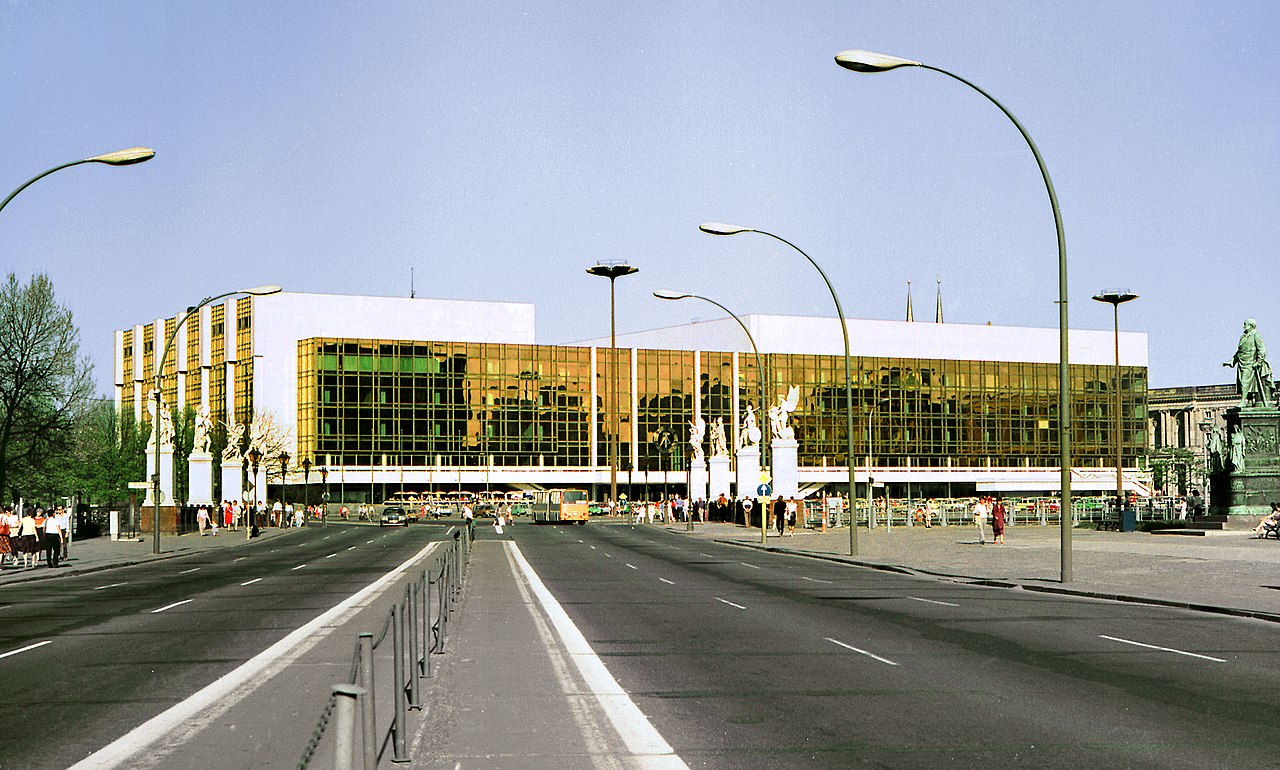Thessaloniki gets ready for its metro launch in November
The underground rapid transit lines have been under construction for almost two decades due to various project delays
 TheMayor.EU logo
TheMayor.EU logo One of Europe’s most expensive cultural projects finds itself between the push and pull of post-colonialism, post-soviet sentiment and contemporary art
The Humboldt Forum, a reconstructed version of Berlin’s Royal Palace opened to the public today, 20 July. The ceremony was attended by the State Minister for Culture Monika Grütters, Berlin's Mayor Michael Müller and General Director Hartmut Dorgerloh. The building will house the non-European collections of the Berlin State Museums, as well as art exhibitions. The new museum and gallery were first available to digital visitors back in December of last year, however, it will now be open to in-person visitation.
The Humboldt Forum is a replica of the baroque Royal Palace, the main residence of House Hohenzollern from 1443 to 1918. After the fall of the monarchy in Germany, the building had various uses, until it was damaged during the allied bombing of the city in World War II.
During the cold war, the site found itself in the GDR (German Democratic Republic) and was promptly blown up in the 1950s.
The new Palace of the Republic (Palast der Republik) was constructed in its place, with the glass and concrete building being finished in 1976. It housed the parliament of the GDR until 1990, however, it served numerous cultural purposes too. It had a large auditorium, a theatre, a cinema, a large art gallery, restaurants, bars, swimming pools and a video game arcade.
 The front facade of the Palace of the Republic in 1986,
The front facade of the Palace of the Republic in 1986,
Source: Jörg Blobelt on Wikipedia, CC BY-SA 4.0
After German reunification in the 90s, the building became vacant, as it struggled with finding a purpose, as lots of Soviet-era buildings do.
Also, it was permanently closed to the public, due to the fact that it contained over 5,000 tonnes of asbestos, despite the use of the material being outlawed in East Germany since 1956.
The Bundestag voted to demolish the Palace of the Republic in 2003 and the reconstruction of the Berlin Palace (now called the Humboldt Forum). The GDR Palace was demolished between 2006 and 2008, while construction of the new one started in 2013 and was completed in 2020.
The new building is named after the famed German scholars Alexander and Wilhelm von Humboldt. It includes the rebuilt baroque facades of the old Royal Palace and the iconic dome towering over Berlin’s Museum Island, with a modern interior designed by the Italian architect France Stella.
In 2019, the costs totalled around 700 million euros and, at that time, it was considered Europe’s most expensive cultural project.
The building incorporates the exhibitions from the Ethnological Museum of Berlin and the Museum of Asian Art, as well as space for a variety of new artistic, cultural and scientific expressions.
At the same time, the museum has been embroiled in some controversy regarding its possession of looted art from Germany’s imperial holdings in Africa and Asia. In all fairness, the Humboldt Forum has acknowledged the existence of said colonial past and formally pledged to take steps towards decolonisation, however, it is extremely unclear what sort of steps those are going to be.
While all this is taking place, an activist group has begun to lobby for the demolition of the new Humboldt Forum and the reconstruction of the Palace of the Republic. Their first goal is to erect a bronze miniature model of the Soviet-era palace right in front of the new building.
They have set out a detailed timetable, and give the new building until 2050 before it needs to be demolished – precisely 30 years, the time the Palace of the Republic was up for.
If you want to keep up with how European cities and regions are changing, follow us on Facebook, Twitter and Instagram.

The underground rapid transit lines have been under construction for almost two decades due to various project delays

Now you can get your wine in Talence by paying directly in Bitcoin

That’s because the state has to spend money on updating the railway infrastructure rather than subsidizing the cost of the popular pass

Rethinking renewable energy sources for the urban landscape

The examples, compiled by Beyond Fossil Fuels, can inform and inspire communities and entrepreneurs that still feel trepidation at the prospect of energy transition

Now you can get your wine in Talence by paying directly in Bitcoin

The 10th European Conference on Sustainable Cities and Towns (ESCT) sets the stage for stronger cooperation between the EU, national and local level to fast track Europe's transition to climate neutrality.

At least, that’s the promise made by the mayor of Paris, Anne Hidalgo

The underground rapid transit lines have been under construction for almost two decades due to various project delays

At least, that’s the promise made by the mayor of Paris, Anne Hidalgo

Hostal de Pinós is located in the geographical centre of the autonomous region

Despite its church-y name, the district has long been known as the hangout spot for the artsy crowds

Urban dwellers across the EU are having a say in making their surroundings friendlier to people and the environment.

Forests in the EU can help green the European construction industry and bolster a continent-wide push for architectural improvements.

Apply by 10 November and do your part for the transformation of European public spaces

An interview with the Mayor of a Polish city that seeks to reinvent itself

An interview with the newly elected ICLEI President and Mayor of Malmö

A conversation with the Mayor of Lisbon about the spirit and dimensions of innovation present in the Portuguese capital














